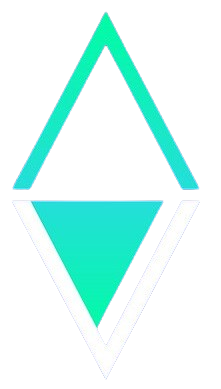Understanding the Role of Ethereum Testnets
In the ever-evolving landscape of blockchain technology, Ethereum’s continuous development is pivotal in maintaining its position as a leading platform for decentralized applications. A significant aspect of this development involves the management and evolution of test networks, or testnets, which are essential for trialing new features and upgrades before their deployment on the mainnet. One notable transition in this realm is the planned deprecation of the Holesky testnet by September 2025 and the introduction of a new testnet, Hoodi, to better serve the community’s needs.
The Functionality of Testnets in Ethereum’s Framework
Testnets are integral to Ethereum’s development process, providing a sandbox environment where developers can experiment with new protocols, smart contracts, and system upgrades without affecting the main blockchain. They simulate the mainnet’s conditions, allowing for rigorous testing and identification of potential issues in a low-risk setting. This process ensures that any changes implemented on the mainnet are robust and secure, thereby maintaining the network’s integrity and reliability.
Holesky Testnet: Aspirations and Drawbacks
Launched in September 2023, Holesky was envisioned as a primary public testnet for Ethereum, complementing existing networks like Sepolia. Its primary purpose was to facilitate staking, infrastructure development, and protocol testing, serving as a critical platform for developers and validators to simulate real-world scenarios. However, Holesky encountered significant challenges during its operational tenure. Notably, during the testing phase for the anticipated Pectra upgrade, it experienced disruptions due to misconfigurations in the deposit contract addresses across several execution clients, including Geth, Nethermind, and Besu. These misconfigurations led to chain splits, undermining the network’s stability and complicating the testing processes.
Despite concerted restoration efforts, Holesky faced extensive inactivity leaks, and the validator exit queue became congested, limiting its utility for specific community testing scenarios. The Ethereum Foundation noted that fully exiting validators would require approximately one year, rendering Holesky impractical for timely Pectra testing.
Introducing Hoodi: A Superior Solution
In response to the challenges faced by Holesky, Ethereum developers launched a new testnet named Hoodi on March 17, 2025. Hoodi is designed to provide a more stable and efficient environment for testing the Pectra upgrade and future enhancements. It mirrors the mainnet’s validator count, offering a realistic testing ground for staking pools and node operators to assess their infrastructure. Hoodi is scheduled to activate the Pectra network upgrade at epoch 2048 on March 26, 2025, at approximately 07:37 UTC. This activation is a crucial step toward ensuring that the Pectra upgrade is thoroughly vetted before its deployment on the mainnet, anticipated in the second quarter of 2025.
Expert Perspectives on the Transition
Industry experts have weighed in on the transition from Holesky to Hoodi, highlighting the importance of adaptability in Ethereum’s development strategy. Ethereum core developer Parithosh Jayanthi emphasized that Hoodi’s design, which aligns closely with the mainnet’s validator structure, makes it an ideal environment for staking pools and node operators to test their setups. Furthermore, the Ethereum Foundation has acknowledged that while Holesky will remain operational until September 2025, its limitations necessitate the shift to Hoodi for more effective testing. This strategic move underscores Ethereum’s commitment to maintaining a robust and efficient testing infrastructure, essential for the network’s scalability and security.
Implications for Developers and the Ethereum Community
The transition from Holesky to Hoodi carries significant implications for developers and the broader Ethereum ecosystem. Developers and staking operators are encouraged to migrate their testing activities to Hoodi to ensure alignment with the latest network configurations and to facilitate seamless integration of future upgrades. This migration is crucial for maintaining the efficacy of testing protocols and for the successful implementation of the Pectra upgrade.
The Ethereum Foundation has outlined a clear timeline for this transition, with Holesky’s support scheduled to end by September 2025 and Hoodi expected to remain active until September 2028. This structured approach provides the community with ample time to adapt to the new testing environment, minimizing potential disruptions and ensuring continuity in development activities.
Looking Forward: Ethereum’s Commitment to Advancement
The deprecation of Holesky and the introduction of Hoodi exemplify Ethereum’s proactive approach to addressing challenges and enhancing its infrastructure. By learning from the limitations encountered with Holesky, the Ethereum community demonstrates its dedication to continuous improvement and innovation. This commitment ensures that the network remains resilient, secure, and capable of supporting the evolving needs of decentralized applications and services.
As Ethereum co-founder Vitalik Buterin aptly stated, “The Ethereum ecosystem’s strength lies in its ability to adapt and evolve in the face of challenges.” This sentiment reflects the community’s resolve to turn obstacles into opportunities for growth, reinforcing Ethereum’s position as a leader in the blockchain space.
Final Reflections on Ethereum’s Strategic Directions
The planned deprecation of the Holesky testnet and the subsequent launch of Hoodi mark a pivotal moment in Ethereum’s ongoing development. These strategic decisions highlight the network’s adaptability and its commitment to providing a robust platform for innovation. As the Ethereum ecosystem continues to evolve, such proactive measures ensure that it remains at the forefront of blockchain technology, ready to meet the challenges and opportunities of the future.



